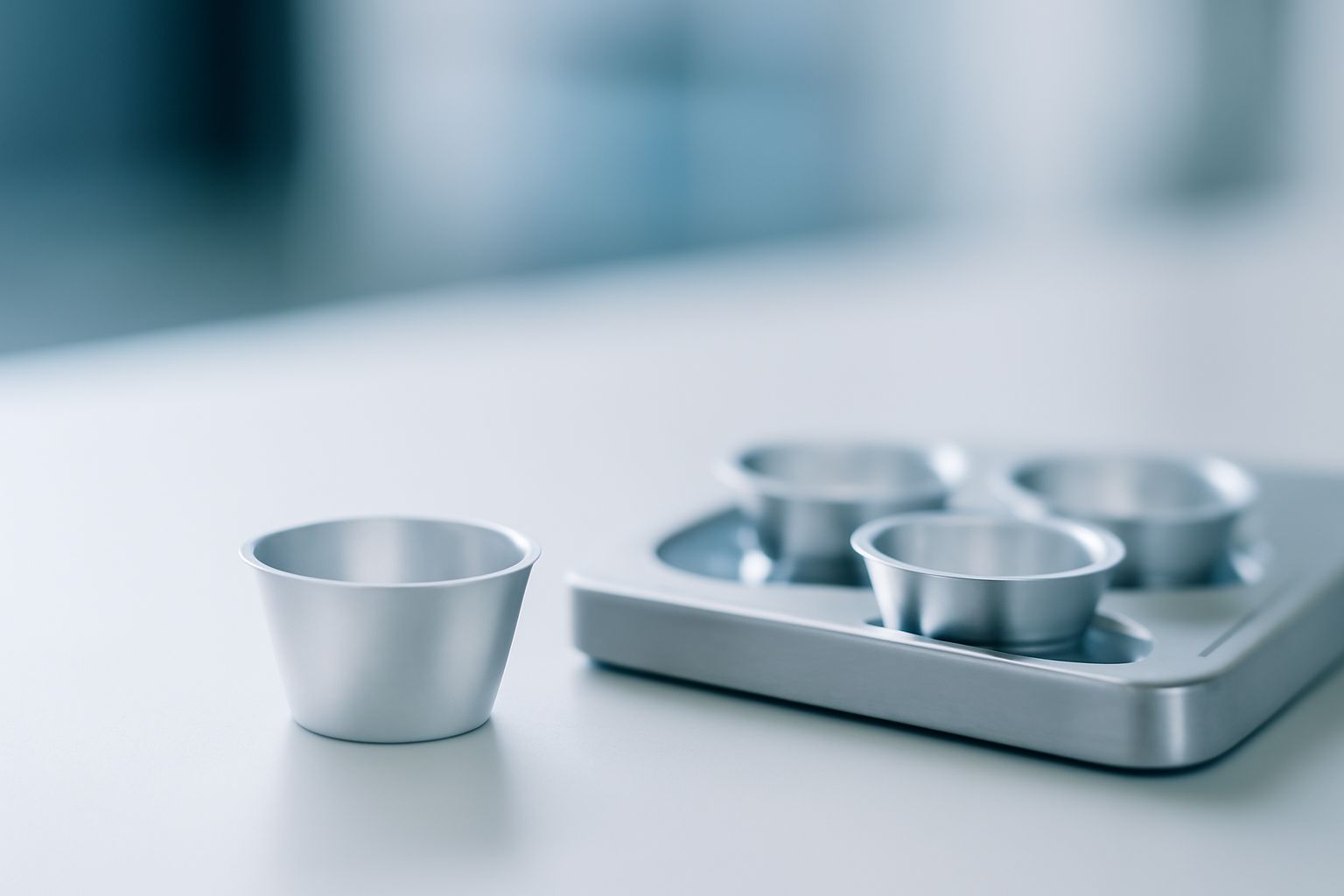Your cart is empty.
shop now
Your cart is empty.
shop now
Polymer research is changing fast. Companies need better, cleaner aluminum pans for DSC. Everyone wants the same thing: stable, real results every time.
The market for high-purity aluminum pans in polymer research is growing. Demand has jumped with more polymer R&D. New technology now delivers more precise and reliable pans for DSC analysis.

As polymer labs face rapid changes, I see clear patterns in what customers expect. I focus on the real-world differences that shape this market. Keep reading to learn how research, technology, and region all matter.
Demand for high-purity aluminum pans is rising every year. Everyone in polymer research needs accurate tools. If the pans fail, experiments fail too.
Polymer research keeps growing fast. More labs are running DSC tests, so the need for reliable aluminum pans also jumps. Demand closely follows research and production trends in materials science.
| Polymer Research Driver | Market Effect | Explanation |
|---|---|---|
| Advanced Plastics Innovation | Increased DSC Testing | More new plastics means more need for good sample pans. DSC is a must for research. |
| Rising R&D Spending | Market Expansion | Research budgets let labs buy better pans and run more tests. |
| Quality Assurance Focus | Growth in Standards | As quality assurance tightens, labs insist on using pure and precise pans. |
When I talk with partners, they all mention rising pressure on quality and speed. I look at purchase orders and see repeated, small batch orders every month. Budgets are tight, but most labs will not trade certainty for savings. Raw data from Statista suggests R&D in polymers will grow by 4.5% per year through 2027. This will keep demand for sample pans steady and strong for years.
New technology makes today's pans sharper and more reliable than before. Old pans could warp or leak. Now, manufacturing is cleaner and more exact.
Better production technology now yields higher purity aluminum, tighter tolerances, and improved sealing for DSC pans. Modern methods help reduce testing errors and improve repeatability for labs.
| Technology | Benefit | Result |
|---|---|---|
| High-Purity Raw Material Processing | Reduces Contamination | More stable test results and signal-to-noise ratio improvements. |
| Automated Precision Forming | Exact Shape and Size | Pans now match equipment needs, like PerkinElmer, closely. |
| Laser Welding for Sealing | Leak Prevention | Higher safety when testing volatile polymers or hazardous samples. |
I talk to customers often. The biggest worry I hear is about fit and result drift. Newer pans using these updated methods leave less margin for error. Repeat customers trust brands that invest in cleaner, more modern methods. They ask for documentation and evidence at every step, especially from global brands. ISO 17025 labs in particular only source pans with trackable quality and exact numbers. My own clients reply when their results remain steady for months without unexplained error.
Regional differences shape this market in real ways. North America and Europe both lead, but each has its own habits, budgets, and rules.
North America and Europe account for most global demand for high-purity aluminum pans. While both regions value quality and efficiency, buyer behavior and sourcing channels often differ.
| Aspect | North America | Europe |
|---|---|---|
| Key Industries | Polymers, Pharmaceuticals, Aerospace, Electronics | Automotive, Chemicals, Materials Science |
| Procurement Focus | Quick Delivery, Online Orders | Compliance and Long-term Relationships |
| Certification Needs | ASTM, ISO Standard References | Strict EU Directives and Documentation |
| Order Size | Frequent, Small Batch | Larger, Scheduled Purchases |
When I manage export documentation, European buyers usually ask for extra certificates and technical files. Their audits are detailed and strict. North American labs are faster to buy online and look for streamlined procurement—speed matters most for them. Both expect clear compatibility tables and real-time inventory data. According to a 2023 Grand View Research report, the US and Germany together make up over 35% of all polymer DSC pan imports worldwide.
This market will stay strong as more tests are needed. Buyers want high standards, fast delivery, and trusted brands. There is low tolerance for mistakes.
Growth in polymer science and industry will support steady demand for high-purity aluminum pans. Advances in manufacturing and closer industry standards will make sourcing easier for labs.
| Trend / Challenge | Market Impact | My Observation |
|---|---|---|
| Standardization of Pan Designs | Easy Sourcing, Lower Errors | Labs now ask for instrument brand and model match. Brands with full compatibility win customer trust. |
| Automation in Testing Labs | Need for Repeatable, Durable Pans | As robots manage DSC, pans must survive more handling without fail. |
| Supply Chain Disruption Risks | Stockouts and Delays | Unrest or shutdowns remind everyone to buy ahead and keep spare pans ready. |
Each year I hear from more labs who keep a small but steady stock of pans—even when budgets are tight. Their main fear is shipment delays. The push to speed up supply chains and remove friction will fuel more innovation. Global logistics data shows that steady demand for DSC pans will last as the world transitions to advanced polymers and automated testing.
The high-purity aluminum pan market grows as polymer advances continue. Labs need fast supply and perfect results. Technology and regional habits drive every buying decision.
Contact Our Technical Team (info@redthermo.com)